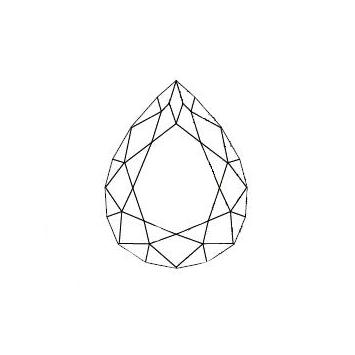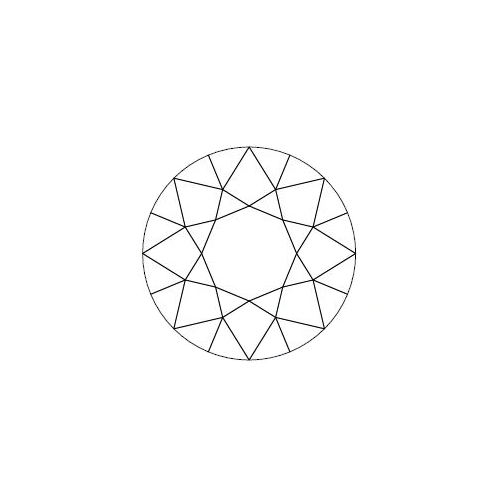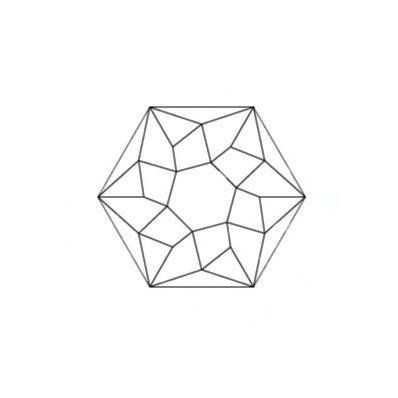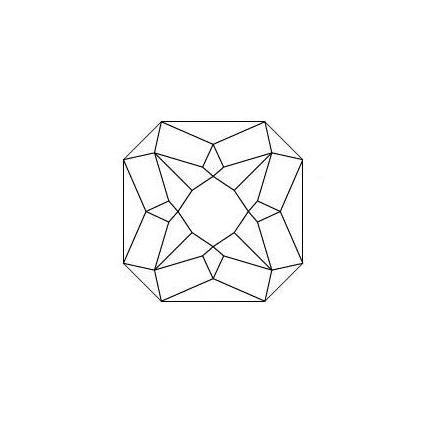Gemstone cut designs refer to the various ways in which gemstones are shaped and faceted to enhance their appearance, brilliance, and overall aesthetic appeal. At Stag & Finch we painstakingly design our own gemstone cuts to bring about the most brilliant and appealing gemstones possible. Each cut design has unique characteristics, affecting how light interacts within the gemstone. Today we’re going to take an indepth look at all the considerations that go into designing the perfect gemstone cut.
Instead of dissecting each gemstone cut by name (there are too many!) we’re going to more broadly generalize gemstone cut design elements to help us create gemstones with the most amount of sparkle.
Symmetry
One of the key elements to creating an attractive and brilliant gemstone design is the symmetry of both the shape of the cut, as well as the facet pattern. Many gemstone cuts, such as a Round Cut, are symmetrical around multiple axes, resulting in a balanced and uniform appearance from all angles. For gemstones with full symmetry, rotating the stone around its axis should not significantly alter the overall appearance. A properly symmetrical gemstone cut ensures that light entering the gemstone is reflected evenly and consistently. This maximizes the gemstone's brilliance and sparkle, as light is dispersed and refracted effectively.
Many gemstone cuts, such as an Emerald/Step-cut have a mirrored symmetry. This means they are symmetrical on one axis at a time. The gem is not symmetrical in every direction at once, but both the length and the width are symmetrical independently. Typically gemstone cuts with mirrored symmetry are the brightest when moving along the longer axis.
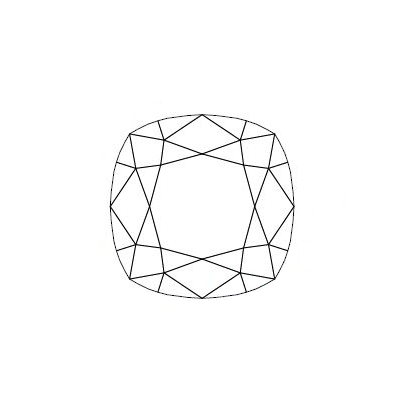
Facet Placement
One of the most crucial elements of a brilliant gemstone design is the placement of each facet, or cut on the gem. The gemstone facets need to be placed both at the correct angle, and in the correct arrangement to create a pattern that is able to capture the light within the gem and bounce it back to your eye.
- Refractive Index: Each gemstone variety will bend light at a unique angle, known as the refractive index (RI). Think of a straw in a glass of water, and how the straw is offset in the water compared to the straw above the water. Water and air have different refractive indexes. We use the RI of each gemstone material to determine which series of angles to place the facets on the gemstone for the optimal brilliance of the gemstone cut.
- Pattern: The brilliance of the gemstone does not mean a whole lot if the gemstone isn’t pleasing to the eye. The facet orientation not only needs to be functional by moving the light around within the gem and ultimately returning it back towards the viewer, but it also needs to be attractive and aesthetically pleasing to look at.
Collapsible content
Average Refractive Index of Popular Gemstones
Moissanite: 2.670
Diamond: 2.417
Zircon: 1.955
Corundum (Sapphire): 1.765
Corundum (Ruby): 1.765
Garnet: 1.714 - 1.888 (Variety Depending)
Alexandrite: 1.750
Spinel: 1.718
Peridot: 1.670
Tourmaline: 1.635
Topaz: 1.623
Beryl (Emerald): 1.580
Beryl (Aquamarine & Morganite): 1.580
Quartz (Amethyst & Citrine): 1.548
Moonstone: 1.520
Number of Facets
The overall visual balance and harmony of the gemstone aesthetic is greatly affected by the quantity of facets in a gemstone design.
- Low Facet Count: Gemstone cuts with a low number of facets such as an antique cut or an emerald/step-cut will have a larger than normal facet size. This can create large flashes of brilliance and color, but a slightly lower than average total brilliance compared to a cut with many facets.
- High Facet Count: A gemstone cut with many facets such as the Round Brilliant cut will produce smaller but more frequent flashes of brilliance and color which results in a higher overall brilliance.
- Mixed Facet Sizes: Mixed cuts such as Stag & Finch’s Round Stormlight cut, borrows the best from each, by having a higher facet count on the bottom (pavillion) with a lower facet count on the top (crown) to create a blended facet pattern with includes both large and more frequent flashes of brilliance and color. Stormlight creates a pleasant and well balanced effect of brilliance and color.
Light Extinction
Light extinction within a gemstone refers to the phenomenon where certain areas of the stone appear darker or less bright. This occurs due to the way light is absorbed, reflected, or refracted within the gemstone. Several factors contribute to unwanted light extinction:
- Shape and Design: The overall shape of the gemstone and the design of its cut can influence how light travels within it. Certain shapes lend themselves to light extinction, think of the tip of a pear. It is normal for even the best pear cut designs to have some level of light extinction at the tip.
- Cut Quality: If a gemstone is not cut with precise angles and proportions, it may not properly reflect and refract light within its facets. Poor cut quality can lead to areas where light is "extinguished," causing unintentional dark spots or a lack of brilliance.
- Facet Alignment: The alignment of facets in a gemstone is crucial for optimal light performance. If facets are not symmetrically aligned or are uneven, light can leak out of the stone instead of reflecting back to the viewer, resulting in extinction.
- Inclusions and Imperfections: More commonly observed in natural gemstones and not lab created gems, inclusions or internal flaws can disrupt the flow of light through the gemstone, causing some areas to appear darker.
Light extinction is something that a gem designer aims to control, not eliminate. A well balanced gemstone design will have some level of light extinction to create internal contrast of light and dark areas within the gem. A gem cut with no light extinction will appear bright, but flat and seemingly 2-dimensional, which is uninteresting. Where a gem with too much light extinction will be dark and dull with no life or brilliance. High-quality cuts are designed to bring a balance of light extinction to create a dynamic and brilliant gemstone.
Windowing
Windowing in a gemstone refers to a phenomenon where part of the stone appears transparent or "see-through" when viewed from above (the table). This effect creates a "window" through which the background can be seen through the gemstone, rather than reflecting light back to the viewer's eye. This is generally considered a flaw in the cutting of the gemstone.
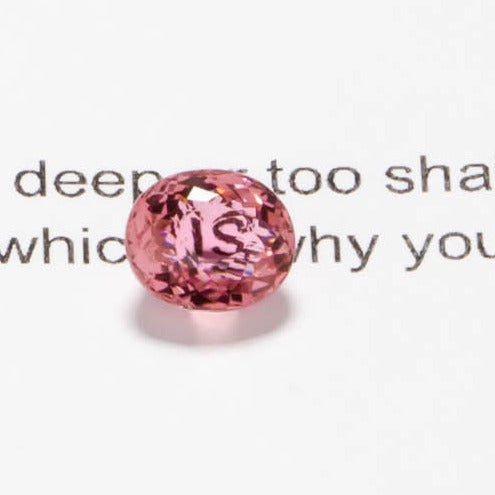
- Incorrect Angles: Gemstones are cut with precise angles to maximize brilliance and light return. If the angles on the bottom part of the gem (pavilion) are too flat or too steep, light can escape through the bottom of the stone instead of being reflected back up. This angle is determined by the Refractive Index (RI) of the gemstone (see “Facet Placement” above) If the pavilion is too shallow, below a minimum critical angle at which light can be internally reflected within the gemstone. This allows the light to pass straight through the stone and creates a window effect, particularly in the center of the stone.
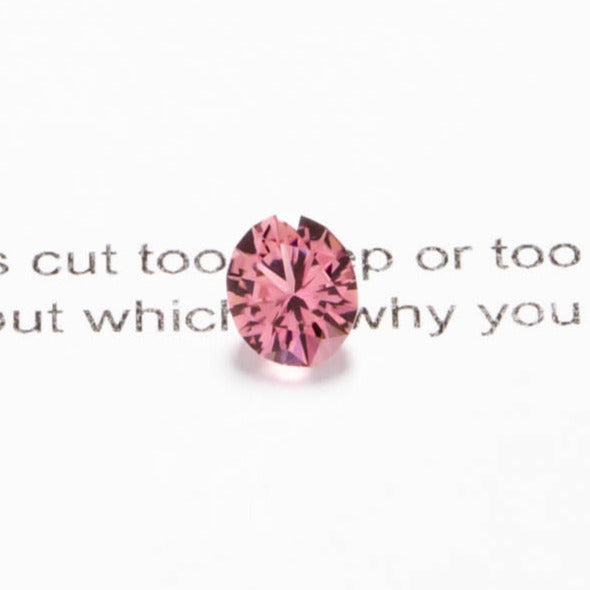
2. Misalignment of Facets: The facets on a gemstone must be symmetrically aligned to reflect light effectively. Misalignment can cause light to leak out of the stone instead of reflecting back, leading to windowing.
3. Loss of Color: In colored gemstones, windowing can dilute the perceived color because light is not properly reflected within the stone. The color appears weaker or washed out, especially in the windowed area.
4. Reduced Brilliance: A windowed gemstone will not sparkle or reflect light as effectively, making it less visually appealing.
To avoid windowing, gemstone cutters must carefully consider the angles, proportions, and symmetry of the cut. Ensuring the pavilion has the correct depth and the facets are properly aligned can help in minimizing the risk of windowing, thereby maximizing the gemstone's brilliance and color.
A lot of careful planning goes into making sure a gemstone's overall appearance is as stunning as possible before ever cutting the first facet.

